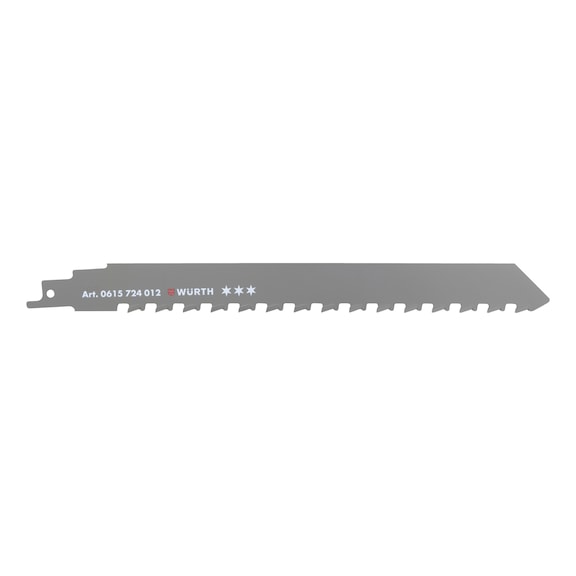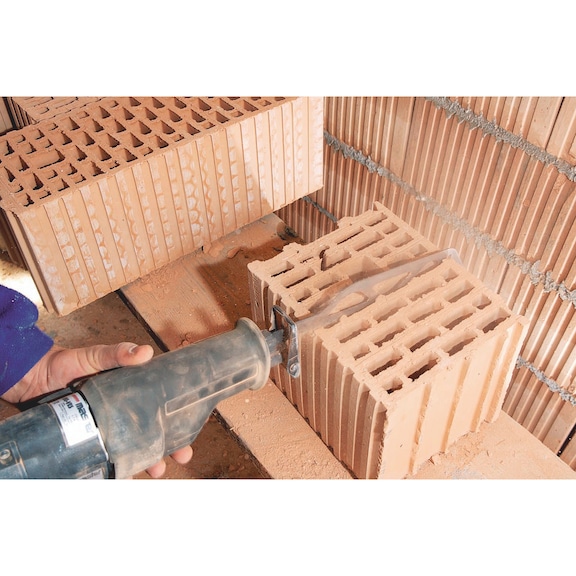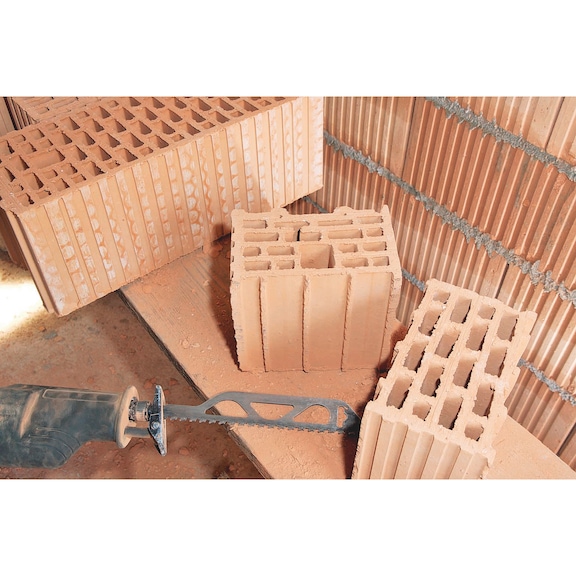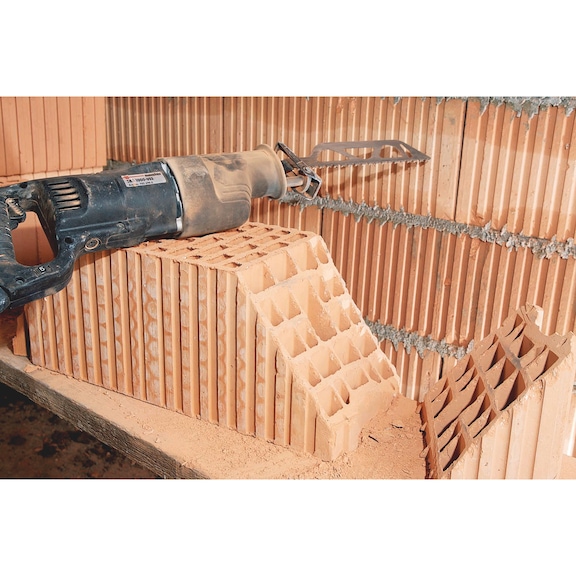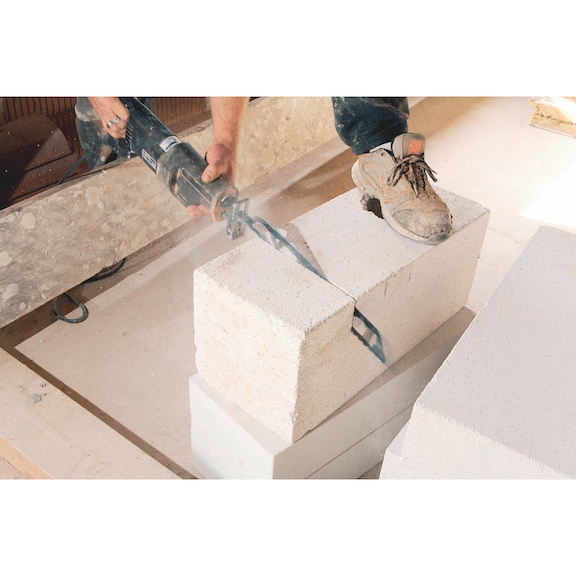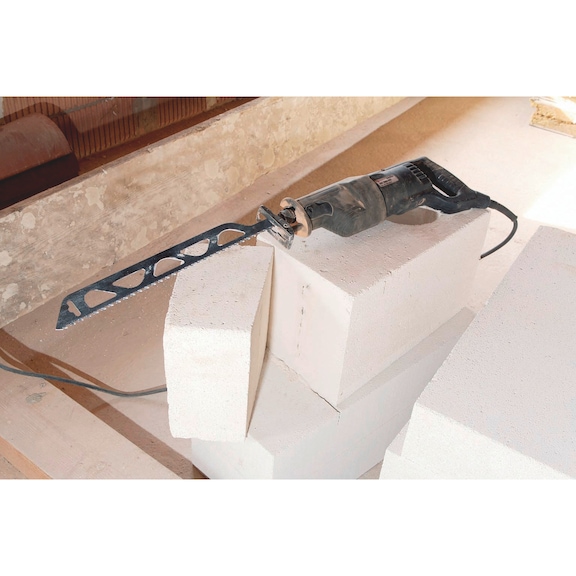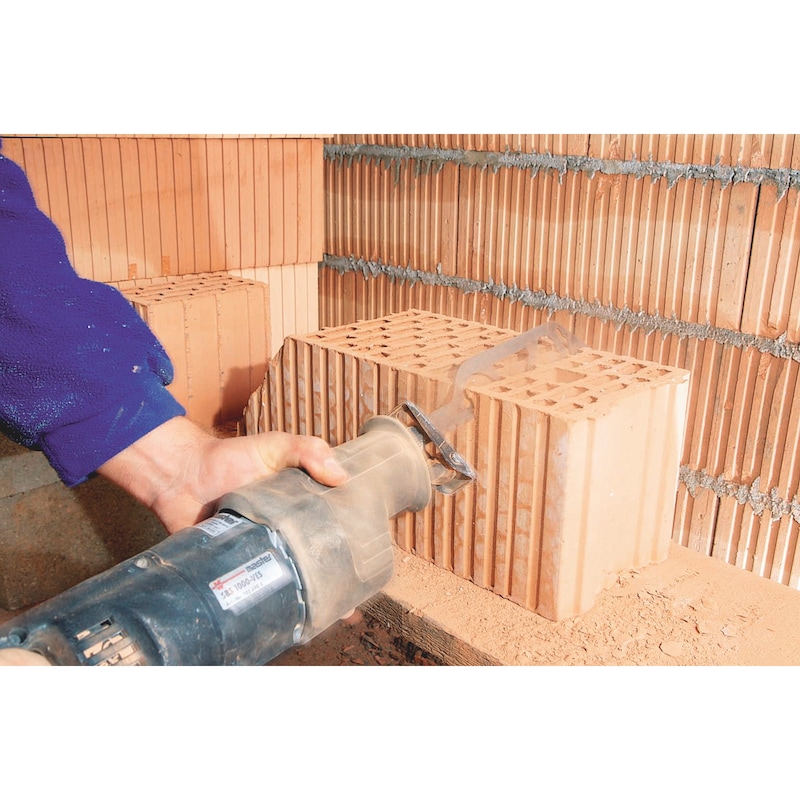The images are examples. For detailed information, other images and documents, please select individual articles from the following table.
Sabre saw blade, construction, three stars For brick/aerated concrete
For cutting lightweight building materials such as bricks, aerated concrete and cement materials
Register now and access more than 125,000 products








Variants
- Very coarse tooth pitch for quick cutting results
- Wide body and thick wall thickness for high stability
- Cutting depth limitation for less tear-out and safe working (anti-recoil effect).
Further technical information can be found on the packaging of the product.
Brick statics
- Compressive strength:
Compressive strength is the breaking load in N/mm², based on the total bearing surface (pressure area including perforation cross-section). The bricks are categorised in strength classes according to DIN 105 based on the loadability until breakage recorded during the test.
- Strength classes:
Strength classes for bricks are defined in DIN 105. The classification is divided into levels from 2–28. High-strength bricks and clinkers can also have considerably higher strengths. Heat-insulating Poroton bricks achieve strength classes of 6–12. The strength class of the brick alone does not provide information on the load-bearing capacity of the masonry, but rather produces a value for the masonry compressive strength together with the mortar used.
Colour code
- Brown: Suitable for wood
- Blue: Suitable for metal
- Grey: Suitable for construction/universal application
- Green: Suitable for stainless steel
- Red: Suitable for special inserts
Star system
- Four stars: High-performance saw blade with an extremely long service life in extreme applications
- Three stars: High-performance saw blade for extremely demanding applications, high cutting performance and long service life.
- Two stars: Excellent blade for heavy-duty applications.
- One star: Excellent standard blade for conventional applications.
Select RAL-colour code
!! NOTE: On-screen visualisation of the colour differs from real colour shade!!

